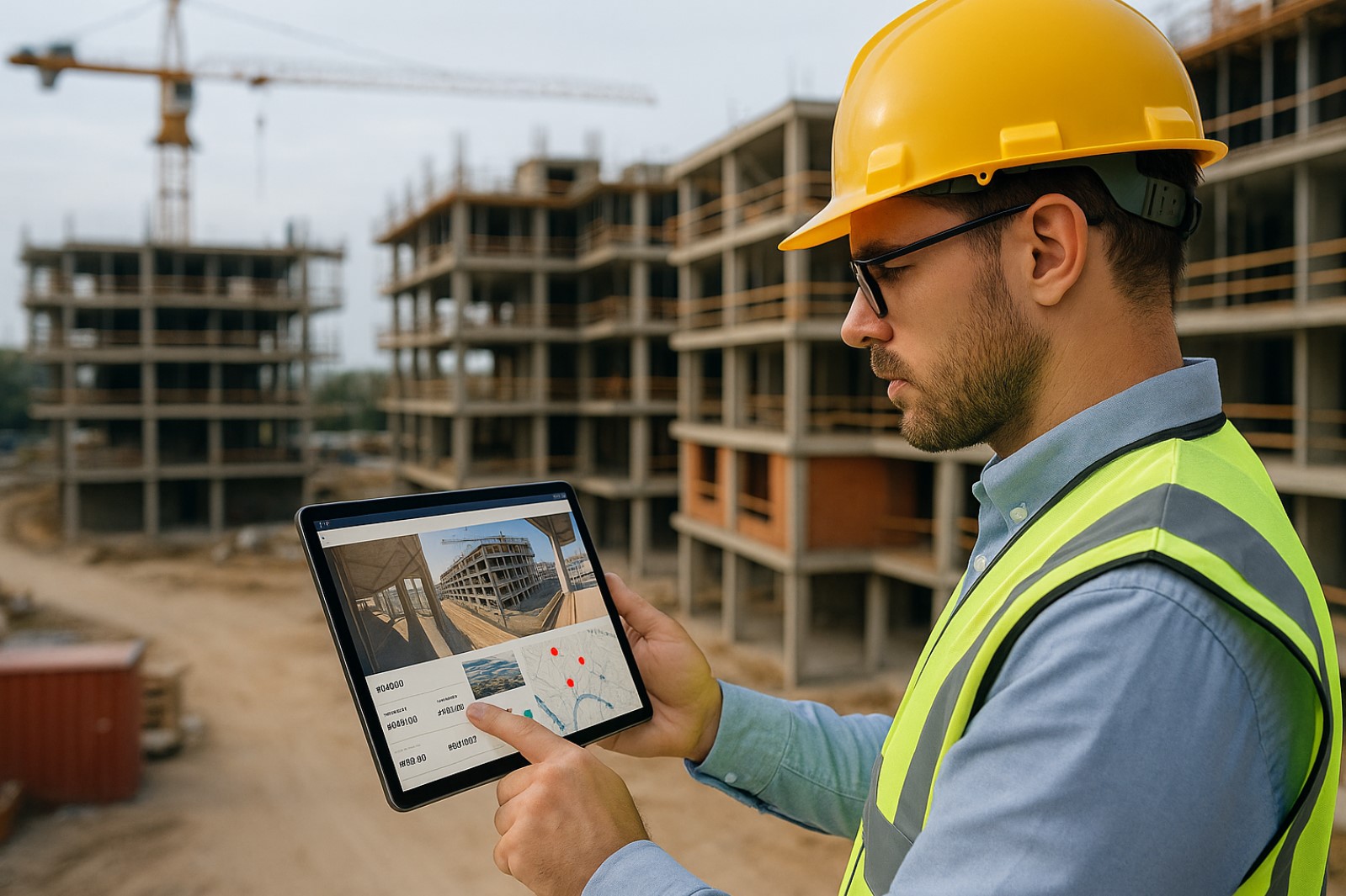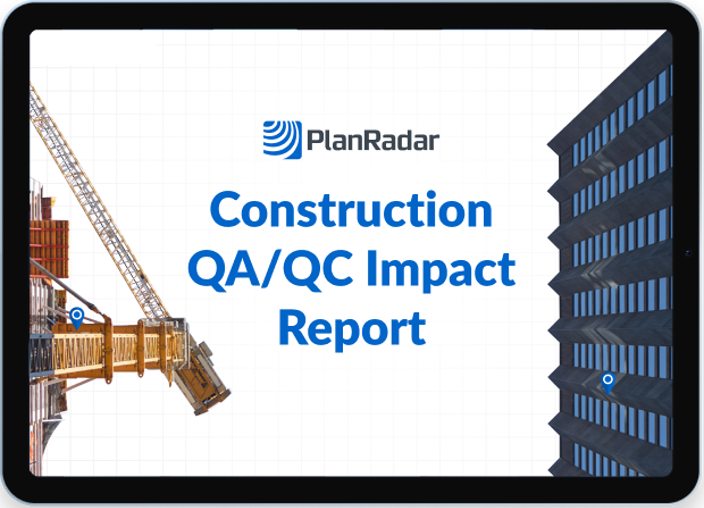Across the GCC’s construction, facility management, and real estate sectors, organizations face rising expectations for quality, compliance, transparency, and operational efficiency. Projects involve more stakeholders, more data points, and tighter deadlines than ever. As a result, digital record-keeping in the building lifecycle has become essential for ensuring smooth project delivery and long-term asset performance.
Despite major strides in digital transformation across Saudi Arabia and the UAE, many projects still rely on outdated methods such as paper files, disconnected spreadsheets, and unstructured communication channels. These legacy practices create a high risk of information loss and misalignment between construction teams, consultants, developers, and FM departments. As governments introduce new digital mandates and stricter regulatory requirements, the need for structured, centralized documentation has never been more urgent.
This article explores why digital record-keeping in the building lifecycle is now a strategic necessity and how structured documentation supports better outcomes from design to operations.

The Building Lifecycle: From Construction to Long-Term Operations
To understand the full value of digital record-keeping in the building lifecycle, it helps to view the building not as a one-time project, but as a long-term asset that evolves through key phases:
- Planning & Design: Architects, engineers, and consultants generate thousands of drawings, approvals, specifications, and models — all of which must be properly stored and continuously updated.
- Construction & QA/QC: Site teams carry out inspections, manage subcontractors, track issues, update drawings, and document daily progress.
- Handover & Commissioning: A complete record of as-built documentation, tests, warranties, and manuals must be delivered to the owner.
- Operations & Facility Management: FM teams rely on accurate information to manage maintenance, safety, repairs, compliance checks, and asset performance.
- Renovations, Retrofits or Expansion: Any future upgrade requires precise knowledge of what was built and how systems were installed.
Across all these phases, the industry faces one challenge: information gets lost. A McKinsey study found that construction teams spend up to 30% of their time searching for project information or recreating it.
Eliminating Information Gaps Between Project Stakeholders
One of the most significant challenges in construction and FM across the GCC is information loss caused by siloed communication. When documentation is scattered across emails, WhatsApp messages, individual hard drives or printed files, essential details often fail to reach the right people at the right time.
This issue becomes especially visible during handovers. Facility managers frequently receive incomplete documentation or inconsistent versions of drawings, leaving them without the information needed to manage the asset effectively. Similarly, developers may lose track of inspection histories, warranty conditions, or installation records, making future renovations or upgrades more complex and costly.
Digital record-keeping in the building lifecycle ensures that information follows the building, not the individual who created it. When all stakeholders operate from a shared, secure, centralized source of truth, the risk of miscommunication decreases, and alignment improves across construction, consultancy, development and FM teams.
Improving Quality and Reducing Rework
International studies consistently show that poor documentation is one of the main causes of rework. Autodesk research indicates that rework can consume up to 5% of total project cost, often due to teams working from outdated information or missing inspection data.
With digital documentation, teams always access the latest drawings, inspection histories, and task updates. Site staff can record defects with photos and videos, track progress with timestamps, and log detailed descriptions of any issues that arise. Engineers and consultants can monitor quality in real time, reducing the likelihood of mistakes being repeated across different areas of the project.
By establishing clear, traceable records, digital documentation improves accountability and ensures that everyone is working from the same source of verified information.
Strengthening Compliance and Audit Readiness
Compliance remains a critical focus across GCC construction and FM due to evolving regulations related to safety, fire protection, sustainability, and asset performance. From civil defense requirements to municipal inspections, organizations are expected to maintain detailed records of all activities that affect building quality and safety.
Traditional document storage makes compliance more challenging. Paper files may be misplaced, damaged, or not updated consistently. Digital files stored on shared drives without proper version control can also create confusion.
By adopting digital record-keeping in the building lifecycle, organizations always maintain audit-ready documentation. Every inspection, maintenance activity, approval, or certificate becomes part of a structured digital trail. When authorities request documentation, teams can generate accurate reports within minutes instead of spending days collecting information from multiple sources. This approach significantly reduces regulatory risks and helps organizations demonstrate full transparency during inspections and handovers.
Creating a Single Source of Truth for All Project Data
Modern construction and FM depend on fast, accurate decision-making. However, information overload and poor documentation practices often slow progress. A unified digital system creates a single source of truth where every drawing, report, photo, correspondence, and approval is stored in one place.
This centralisation helps teams avoid duplicate work, removes uncertainty about document versions, and supports better coordination between departments. Whether a project manager checks a QA/QC inspection, a consultant reviews a defect, or an FM engineer investigates an asset, the information they need is always accessible and reliable.
A shared data environment reduces disputes, protects against claims, and improves collaboration between all stakeholders involved in delivering and operating the building.
Supporting Faster and More Accurate Handover Processes
Handover is historically one of the most stressful phases for contractors and developers. Preparing as-built drawings, warranties, O&M manuals, and inspection records can take weeks when documentation is scattered across various sources.
Digital record-keeping transforms this process. Because all documentation is captured, organised, and updated throughout the project, the handover package is essentially ready by the time construction nears completion. FM teams receive accurate, structured information that improves their ability to maintain the building from day one.
For owners, this reduces the risk of early-stage operational challenges and ensures that the asset enters its operational phase with a clear, complete record of what has been built.
Digital Project Handover Records: A Guide for General Contractors
Enhancing Facility Management Through Accurate Historical Data
Once a building enters operation, documentation becomes the backbone of efficient facility management. Maintenance schedules, asset performance data, safety logs, and service histories all rely on accurate records created during construction.
Without this information, FM teams operate reactively, responding to issues without understanding the full context. This leads to higher costs, more downtime, and inefficient use of resources.
With digital record-keeping in the building lifecycle, FM teams gain complete visibility over assets, their condition, warranty status, and maintenance history. This supports proactive planning, reduces breakdowns, and improves long-term operational efficiency.
Protecting Long-Term Real Estate Asset Value
Real estate developers and investors increasingly expect detailed, well-organised documentation when evaluating properties. A building supported by accurate digital records is easier to audit, maintain, renovate, and upgrade. It also offers clearer transparency on asset performance, which can positively influence investment decisions and long-term valuation.
In the GCC, where large-scale developments continue to expand rapidly, documentation quality is becoming a competitive differentiator. Assets with strong digital records are more attractive to investors, operators, and end-users.
Scaling Real Estate Development: A Smart Growth Blueprint
How PlanRadar Supports Digital Record-Keeping Across the Entire Lifecycle
PlanRadar provides a unified digital environment where construction teams, facility managers, and real estate developers can document, track, and manage every stage of the building lifecycle. Instead of relying on scattered files or manual processes, all project information becomes centralized, structured, and easily accessible.
Through one platform, teams can streamline communication, maintain consistent documentation standards, and ensure that all stakeholders operate from accurate, up-to-date information. This improves coordination during construction, simplifies handovers, and strengthens long-term operational efficiency.
With PlanRadar, organizations can:
- Digitise QA/QC inspections
- Generate reports instantly
- Track issues with photos, videos, and deadlines
- Maintain complete asset histories
- Manage subcontractors with clear accountability
- Centralize all documentation in one secure platform
- Support smooth, structured handovers
- Standardize workflows and processes across all projects
These capabilities help construction, FM, and real estate teams reduce information loss, enhance transparency, and build a continuous digital record that supports both project success and long-term asset performance.
Conclusion
As construction, real estate, and facility management evolve across the GCC, the role of accurate, accessible documentation has become more important than ever. Digital record-keeping in the building lifecycle ensures that every phase—from design to operations—is supported by reliable information that improves quality, reduces risk, and enhances long-term asset value.
Organizations that invest in digital documentation now will be better prepared to meet regulatory demands, deliver higher-quality buildings, and operate assets more efficiently in the years ahead.
Get your free e-book: Information Loss in Construction
Learn how poor documentation affects quality, timelines, and cost — and what practical steps you can take to fix it.


